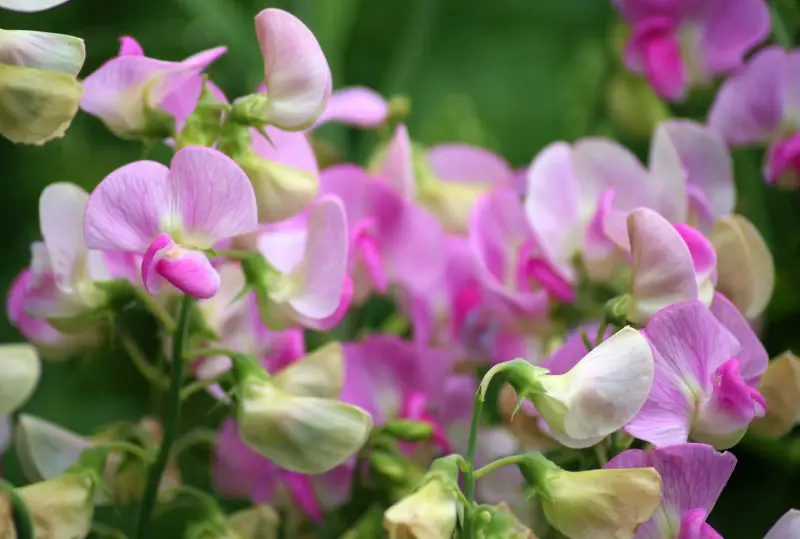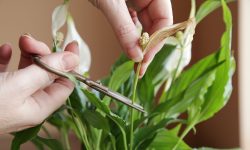Sweet peas, with their charming tendrils and richly scented flowers, bring a romantic flair to any garden. But if you want to enjoy their full floral display, timing is everything. Plant too early, and they may struggle in frost. Plant too late, and summer heat can cut their blooming short. Knowing exactly when to plant sweet peas based on your local climate is the key to unlocking their peak performance.
Whether you live in a warm Southern region, a cool Northern zone, or somewhere in between, this guide will walk you through the best planting windows, tips for extending bloom time, and how to work with—not against—your weather patterns. By the end, you’ll be ready to grow sweet peas that thrive and bloom beautifully, no matter where you garden.
Understanding the Growth Cycle of Sweet Peas

To grow sweet peas successfully, you need to understand how they develop from seed to flower. Sweet peas (Lathyrus odoratus) are cool-season annuals that follow a clear but climate-sensitive growth cycle. Each stage—germination, vegetative growth, flowering, and seed production—depends heavily on temperature, sunlight, and soil conditions.
The cycle begins with germination, which usually takes 7 to 14 days in moist, well-drained soil with temperatures between 50°F and 65°F (10°C to 18°C). During this stage, the roots establish, and the first leaves emerge above the soil. Once sprouted, sweet peas quickly shift into vegetative growth, producing tendrils and leaves that climb toward the sun. This phase is crucial, as a strong root and stem system supports future flowering.
As the days lengthen and temperatures stay mild, sweet peas transition into their blooming phase. Buds begin to form when plants are well-established and the weather stays consistently cool. This is typically in early spring in cooler climates or late winter in warmer zones. Flowering can last several weeks if conditions remain favorable—cool nights, moderate daytime temperatures, and consistent moisture are ideal.
Eventually, if not regularly deadheaded, sweet peas will shift to seed production. The energy that once supported blooms now goes into developing pods. Once this starts, flowering will slow or stop altogether. Understanding this natural rhythm helps you decide when to sow your seeds, how to support your plants through each phase, and how to extend bloom time for the most rewarding display.
When to Plant Sweet Peas by Climate Zone
Planting Sweet Peas in Cold Climates (Zones 3–5)
In cold northern regions, such as USDA Zones 3 through 5, sweet peas should be started indoors 6 to 8 weeks before the last expected frost. Once the soil is workable and light frosts are still possible—typically by mid to late April—you can safely transplant your seedlings outdoors. If you prefer to direct sow, wait until the ground has thawed and dried out enough, usually around mid-April to early May. These cool conditions help sweet peas establish roots without being stressed by sudden warmth.
Planting Sweet Peas in Temperate Climates (Zones 6–7)
For gardeners in temperate zones, early spring is the best time to sow sweet peas directly outdoors—roughly 4 to 6 weeks before your average last frost. In Zone 6, this typically means sowing in late March or early April. You can also start seeds indoors and transplant once the risk of hard frost has passed. Fall planting is not recommended here, as seedlings won’t survive prolonged freezing conditions during winter.
Planting Sweet Peas in Mild Winter Climates (Zones 8–9)
In regions like the Pacific Northwest or coastal California, where winters are mild and frost is minimal, fall planting is ideal. Sow sweet peas outdoors in October or November to give them time to establish a strong root system before the coldest months. These overwintered plants will reward you with early and abundant blooms in late winter to early spring. The mild winter temperatures in Zones 8–9 create perfect growing conditions for sweet peas to thrive from the start.
Planting Sweet Peas in Warm Climates (Zones 10–11)
In subtropical and tropical zones, including parts of southern Florida or southern Texas, fall sowing is not just recommended—it’s essential. Plant your sweet peas between late October and early December to take advantage of the short, cooler winter period. Trying to plant in spring or summer in these zones will almost always fail, as sweet peas struggle with heat and will not germinate or grow well. In warm climates, treat sweet peas as winter annuals for the best success.
How Soil Temperature Affects Germination
Soil temperature plays a critical role in how quickly and successfully sweet pea seeds germinate. These cool-season flowers prefer soil temperatures between 50°F and 65°F (10°C to 18°C) for optimal sprouting. When the soil is too cold—below 45°F (7°C)—germination slows dramatically, and seeds may rot before they sprout. On the other hand, if the soil is too warm—above 70°F (21°C)—germination rates drop and seedlings may become weak or fail to emerge altogether.
Monitoring soil temperature before planting is essential, especially for gardeners sowing early in spring or late in fall. Using a soil thermometer helps you pinpoint the perfect window. In regions with fluctuating spring weather, sowing during a mild spell ensures seeds experience steady, favorable conditions. If necessary, warming the soil with dark mulch or row covers can speed up germination and give your sweet peas a head start.
Tips for Starting Sweet Peas from Seed
Ideal Temperature Range for Sweet Pea Germination
Sweet peas thrive when germinated in soil temperatures between 50°F and 65°F (10°C to 18°C). In this optimal range, seeds absorb moisture efficiently, enzymes activate, and seedlings emerge robustly within 7 to 14 days. Cooler temperatures in this range mimic their natural early-spring conditions, leading to strong root systems and compact, healthy growth. Consistently maintaining this range increases germination success and reduces the risk of weak or leggy plants later on.
Risks of Planting in Soil That’s Too Cold
Planting sweet peas in soil below 45°F (7°C) can result in very slow or failed germination. Seeds may remain dormant for weeks, increasing their exposure to rotting caused by excess moisture and fungal pathogens like Pythium or Fusarium. In heavy, clay soils that retain cold and water, the problem worsens. If you garden in a northern climate, starting seeds in pots indoors or using protective covers outside can help avoid these early-spring setbacks.
Risks of Soil That’s Too Warm
When soil temperatures rise above 70°F (21°C), germination rates drop quickly, and the emerging seedlings may be stunted or fail altogether. Warm soils speed up evaporation, leaving seeds without consistent moisture. In some cases, the seed coat hardens, making it harder for the sprout to break through. This is especially problematic in late spring or early summer sowings in hot zones. For best results in warm climates, plant as early as possible or choose a shaded location to moderate soil heat.
How to Measure Soil Temperature
Accurate soil temperature readings are essential for timing your sowing correctly. Use a digital or analog soil thermometer inserted about 2 inches deep—the typical depth for sweet pea seeds. Take readings early in the morning over three consecutive days to get a reliable average. Avoid planting until soil temperatures consistently fall within the ideal germination range. For large garden plots, take readings in several spots, especially if sunlight and shade vary across your beds.
Ways to Improve Germination in Marginal Temperatures
If your soil isn’t quite in the optimal range, there are several techniques to boost germination. Soaking seeds in warm water for 12–24 hours can soften the seed coat and encourage quicker sprouting. Raised beds warm up faster than ground-level soil and provide better drainage, which is especially helpful in cool, wet climates. Covering the soil with black plastic or using cold frames helps trap warmth and speed up germination. Adding well-aged compost also moderates soil temperature and improves aeration for tender seedlings.
Seasonal Planting Guide by Region
Planting Sweet Peas in the Northeast
In cooler northeastern states like New York, Vermont, and Massachusetts, sweet peas benefit from an early start. Begin seeds indoors in late February to early March to get a head start on the growing season. You can transplant them outdoors once the soil is workable and daytime temperatures consistently hover above freezing—usually by late March or early April. Because summer heat tends to arrive suddenly in this region, early planting helps ensure flowers bloom before temperatures climb above 80°F (27°C), which can shorten the flowering period.
Planting Sweet Peas in the Southeast
In southern states such as Georgia, South Carolina, and northern Florida, the climate is ideal for fall sowing. Plant sweet pea seeds outdoors between mid-October and early November, when soil temperatures are still warm enough for germination but not too hot to cause stress. Sweet peas will overwinter in these regions, developing strong root systems through winter dormancy. This results in vigorous spring growth and earlier blooms—often appearing by late February or March. Provide a mulch layer for insulation if early frosts threaten tender young shoots.
Planting Sweet Peas in the Midwest
In states like Illinois, Indiana, Michigan, and Ohio, the planting window is narrower due to colder winters and fluctuating spring temperatures. Start seeds indoors in late February or early March under grow lights or a sunny windowsill. For direct sowing, wait until early to mid-April, once the ground has thawed and the last hard frost has passed. Midwest weather can be unpredictable, so consult your local frost calendar and be ready to protect seedlings with row covers during unexpected cold snaps.
Planting Sweet Peas in the Southwest
In arid regions like Arizona, southern Nevada, and New Mexico, timing is everything. Sweet peas struggle in high heat, so fall planting—typically in November or early December—is essential. The mild winter allows sweet peas to establish roots, while flowering occurs in late winter or early spring before hot weather sets in. Choose a spot with afternoon shade and rich, well-drained soil. Water consistently but avoid soggy conditions. Mulch helps retain soil moisture and keeps temperatures cooler around the root zone.
Planting Sweet Peas in the Pacific Northwest
With its mild winters and long, cool springs, the Pacific Northwest (including Washington, Oregon, and coastal British Columbia) provides one of the most favorable climates for sweet peas. Direct sowing from late October through November is common and often leads to strong spring growth and early flowering. If fall planting isn’t possible, you can also sow in early spring (February to early March) once the ground is workable. Because of frequent rain, ensure the soil drains well to prevent rot, and use trellises or fences to keep vines off damp ground.
How to Encourage Earlier Blooms
To get your sweet peas to bloom earlier in the season, timing and technique are key. Whether you’re growing in a cool or warm region, the strategies below will help you speed up flowering and enjoy more color sooner.
Pre-Soak Seeds for Faster Germination
Sweet pea seeds have a tough outer shell that can delay germination. To speed things up, soak the seeds in lukewarm water for 12 to 24 hours before planting. This softens the seed coat and allows moisture to penetrate more easily, resulting in quicker sprouting—often within 7 to 10 days instead of 2 weeks or longer.
Start Seeds Indoors
In regions with late frosts or short springs, begin seeds indoors 6 to 8 weeks before your last frost date. Use peat pots or cell trays filled with high-quality seed-starting mix. Keep the soil moist and warm—ideally between 55–65°F (13–18°C). Providing a bright light source, such as a south-facing window or grow lights, prevents leggy growth and ensures strong, early development.
Pinch Seedlings for Bushier Plants
When indoor-grown seedlings reach about 4 inches tall and have developed 3 to 4 leaf pairs, pinch off the top set of leaves. This encourages the plant to branch out and form multiple flowering stems instead of one long vine. More stems mean more blooms and a fuller display earlier in the season.
Use Cold Frames or Cloches Outdoors
If you want to direct sow but still encourage early blooms, use cold frames, row covers, or plastic cloches to trap heat and protect young seedlings. These structures warm the soil, shield plants from late frosts, and extend your growing season by 2 to 3 weeks. In cooler climates, this can make the difference between blooming in early May or late June.
Choose Early-Flowering Varieties
Not all sweet peas bloom at the same time. Some heirloom and modern cultivars are bred specifically for early flowering, such as ‘Winter Sunshine’, ‘Early Multiflora’, or ‘Early Spencer’. Planting these varieties increases your chances of seeing flowers several weeks before standard types.
Feed Early With a Balanced Fertilizer
Once your seedlings are established and showing healthy growth, start feeding with a balanced, low-nitrogen fertilizer (like 5-10-10) every 10–14 days. Too much nitrogen delays flowering and promotes leafy growth. A fertilizer higher in phosphorus and potassium encourages earlier and more abundant buds.
Provide Full Sun and Good Drainage
Sweet peas thrive in full sun—at least 6 hours a day. Position them in a south-facing location and ensure they’re planted in well-draining soil enriched with compost or aged manure. Cold, soggy soil delays growth and bloom time, while warm, fertile soil accelerates development.
Fall Sowing in Mild Climates
In regions with mild winters (Zones 7–10), sowing in fall allows sweet peas to overwinter and bloom as early as late winter or early spring. These plants usually flower several weeks before spring-sown counterparts and produce more vigorous growth thanks to their well-developed root systems.
Common Planting Mistakes to Avoid
Planting sweet peas may seem simple, but several common mistakes can prevent successful germination and flowering. One frequent issue is planting seeds too late in the season. Sweet peas thrive in cool weather, and waiting until temperatures rise can result in weak growth or even failure to flower. In warm regions, delaying planting past early winter can expose young plants to excessive heat before they bloom. On the other hand, gardeners in colder climates often sow seeds too early without adequate protection, leading to frost damage or stunted seedlings.
Another mistake is planting seeds too deep or in poorly draining soil. Sweet pea seeds should be sown about 1 inch deep in well-aerated soil. If the soil is heavy, compacted, or retains too much moisture, seeds may rot before sprouting. Using rich but well-draining soil and ensuring containers or garden beds have proper drainage is critical. In addition, failing to soak seeds before planting can delay or reduce germination, especially with older or harder seeds.
Crowding seedlings is also a common error. Sweet peas need good air circulation to prevent fungal diseases and produce strong vines. Overcrowding limits airflow and light, resulting in leggy growth and fewer flowers. Proper spacing, thinning, and timely support structures like trellises are essential for healthy development.
Finally, many gardeners overlook the importance of soil nutrition and sun exposure. Sweet peas require full sun and benefit from a balanced feeding schedule, especially during early growth. Planting them in partial shade or forgetting to amend the soil with compost or phosphorus-rich fertilizer can hinder both growth and blooming. Avoiding these common pitfalls will help ensure your sweet peas thrive from seed to bloom.
Companion Plants and Timing Considerations
Pairing Sweet Peas With Spring Bulbs
Sweet peas pair beautifully with early spring bloomers like tulips, daffodils, crocuses, and hyacinths. These bulb flowers typically emerge and flower while sweet peas are still establishing their vines, creating a layered and dynamic display. Because sweet peas are vertical growers, they don’t overshadow or compete with the low-growing bulbs—instead, they add height, texture, and fragrance just as the bulb flowers begin to fade. To make the most of this pairing, plant your bulbs in fall and sow sweet pea seeds nearby either in fall (in mild climates) or very early spring (in colder zones). By timing their growth cycles to overlap slightly, you extend the beauty of your garden beds into late spring with a seamless transition from bulbs to vines in bloom.
Interplanting With Cool-Season Veggies
Sweet peas also work well with cool-season vegetables like lettuce, spinach, arugula, radishes, and kale. These veggies grow quickly in the cool months, thriving in the same conditions sweet peas prefer early on. By interplanting, you make efficient use of garden space—especially in small beds. Lettuce and spinach, for instance, can be harvested in just a few weeks, freeing up room as sweet peas begin to stretch and climb. Their shallow roots also minimize competition for nutrients. This type of companion planting not only supports succession growing but also creates a functional and beautiful edible-floral garden mix. Just make sure to provide trellising or vertical supports early so the sweet peas can climb without shading out the greens too soon.
Caring for Sweet Peas After Planting
Training and Supporting Vines
Sweet peas are natural climbers, but without support, they’ll sprawl on the ground and become tangled or more prone to disease. Installing trellises, netting, or bamboo teepees right at planting time helps prevent root disturbance later on. Choose a support structure at least 4–6 feet tall to accommodate their mature height. As the vines grow, gently guide the tendrils toward the support and loosely tie them if needed. Vertical training not only keeps plants healthier but also promotes better air circulation, reducing the risk of powdery mildew and other fungal issues. It also makes harvesting blooms much easier.
Pinching for Bushier Growth
Pinching back sweet pea seedlings is a simple but highly effective technique to promote fuller growth. When young plants reach about 5 to 6 inches in height, use your fingers or clean snips to remove the top pair of leaves above a leaf node. This stimulates the plant to send out multiple side shoots, which leads to a bushier plant with more flowering stems. While pinching may slightly delay the first bloom, it ultimately results in more abundant and longer-lasting flowers—especially beneficial if you’re growing sweet peas for cut arrangements or showy garden displays.
Mulching to Maintain Soil Temperature
After transplanting or once seedlings are well established, apply a light layer of organic mulch around the base of the plants. Suitable materials include straw, fine bark, or compost. Mulch helps stabilize soil temperatures by keeping the root zone cool, especially as spring temperatures rise. It also retains moisture, suppresses weed growth, and protects shallow roots from heat stress or sudden cold snaps. In regions with early warm weather, mulching can significantly prolong the blooming season by keeping sweet peas in their preferred cool-root conditions for longer. Be sure not to pile mulch directly against the stems, as this can trap moisture and invite rot.
Frequently Asked Questions About When to Plant Sweet Peas
When is the best time to plant sweet peas?
The ideal time to plant sweet peas depends on your climate. In mild winter regions (USDA Zones 8–10), you can sow seeds in late fall to allow roots to establish over winter for earlier spring blooms. In colder regions (Zones 3–7), start seeds indoors 6–8 weeks before the last frost or sow outdoors as soon as the soil is workable in early spring. Sweet peas thrive in cool weather and should be established before hot temperatures arrive.
Do sweet peas need full sun to thrive?
Yes, sweet peas perform best in full sun, which means at least 6 hours of direct sunlight per day. While they can tolerate light afternoon shade, especially in warmer climates, too much shade will result in fewer flowers and leggy growth. Ensure they are planted in an open, sunny location with good air circulation to promote healthy vines and abundant blooms.
How often should I water sweet peas?
Water sweet peas regularly to keep the soil evenly moist but not soggy. During dry spells or warmer spring weather, they may require deep watering 1–2 times per week. Avoid overhead watering to reduce the risk of fungal diseases like mildew. Mulching can also help conserve soil moisture and reduce watering frequency. Always check soil moisture by feeling it; it should feel slightly damp a few inches below the surface.
Why aren’t my sweet peas blooming?
Several factors can delay or prevent blooming. The most common issues include:
Too much nitrogen: This promotes lush foliage at the expense of flowers.
Not enough sunlight: Sweet peas need full sun to initiate blooms.
Improper pinching: Failing to pinch young seedlings can lead to tall, weak vines with fewer flowering stems.
Heat stress: High temperatures can cause flowering to slow or stop. In warmer zones, plant early and keep roots cool with mulch.
Can I grow sweet peas in containers?
Yes, sweet peas can be successfully grown in containers, provided you choose a deep pot (at least 10–12 inches) to accommodate their long roots. Use high-quality, well-draining potting soil and place the container in a sunny location. Provide a small trellis or support for the vines to climb. Container-grown sweet peas may dry out faster than in-ground plants, so monitor moisture closely and water more frequently, especially in warm or windy conditions.
Conclusion: Give Your Sweet Peas the Best Start
Planting sweet peas at the right time is the key to unlocking their full beauty. Whether you’re growing in frosty northern zones or mild coastal regions, understanding your climate makes all the difference. Early sowing ensures healthy roots, longer blooming, and better overall performance. Adjust your planting schedule based on soil temperature, frost dates, and local conditions to get the most from these beloved climbers. With proper planning, your garden can be filled with fragrant, fluttering blossoms that signal spring’s arrival in every corner of the country.






